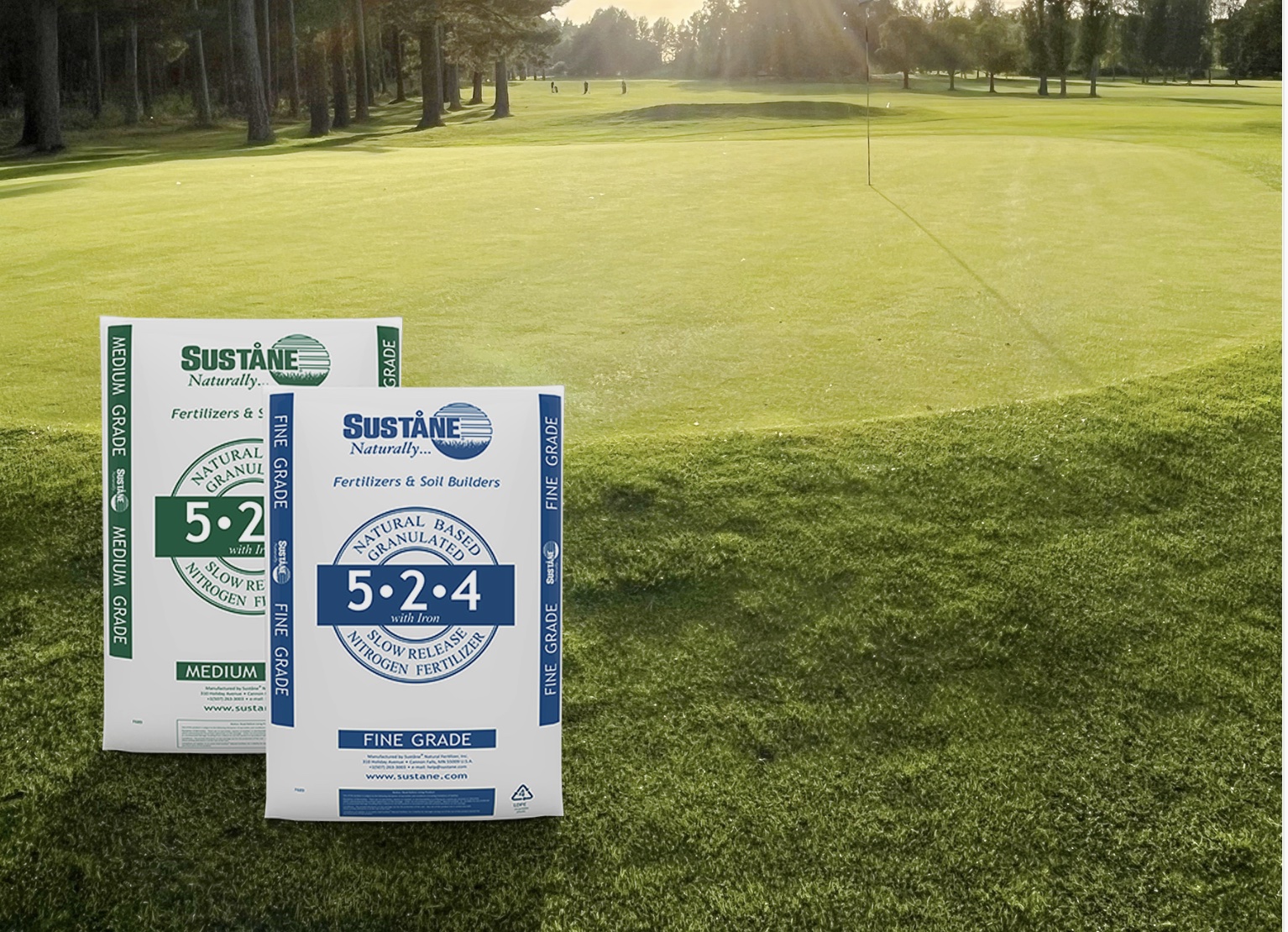A programme based around Suståne 5-2-4+Fe organic slow-release fertiliser is working wonders at Linköping Golf Club in Sweden – delivering enhanced consistency in plant health and growth for Head Greenkeeper Andreas Bergqvist and his team.
Now into their second year of pursuing a more natural approach to enhancing soil biology, not only are the greens performing better, the additional strength has seen improved resistance to Anthracnose.
Andreas has been in charge of the maintenance of the picturesque parkland course for the last five years, but has been at the club since 2001 as a deputy where he first gained experience of products from the Suståne range.
“My approach to plant health is very much to work with nature and feed from the bottom up, rather than the top down,” he explains. “We’d been using Suståne for a number of years, but when I took over I further reduced artificial inputs in favour of upping our Suståne programme to get better structure into our push-up greens.”
The current plan consists of 8-10 week applications of Suståne 5-2-4+Fe between the months of April and September; the long-lasting sources of organic nitrogen promoting greater root development and good colour.
“The main benefit we’ve found is that you don’t get the flush of growth like you do with synthetic fertilisers,” Andreas continues. “It keeps the greens consistent in terms of playability and means that we’re employing fewer mechanical practices such as verti-cutting to keep on top of rapid growth which, in turn, brings benefit for surface quality and health.”
“Prior to using Suståne we would also commonly see outbreaks of Anthracnose around the course. This appears to have decreased significantly, and when we do get a patch we can target treat with some additional 5-2-4+Fe and it’s seemingly resolved within a couple of days.
“One of the biggest issues we face here in southern Sweden is drought. The Suståne product being naturally derived means that we can apply when we need to, and not when the rainfall forecast is in our favour. The boost to root development also means we’re finding that the grass is more tolerant to the hot and dry conditions which means we’re well-placed to deal with the changing climate moving forwards.”

